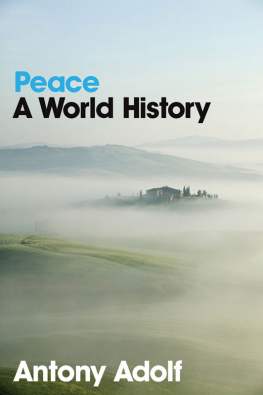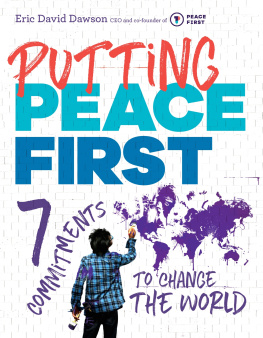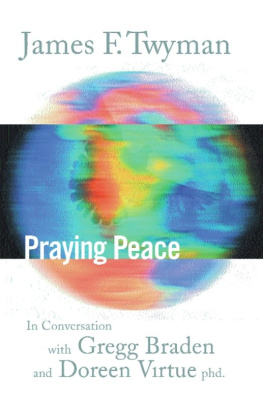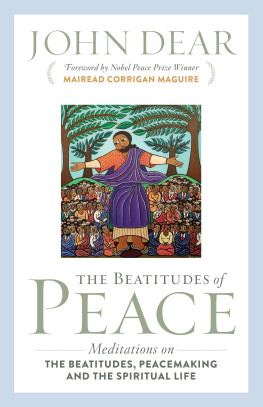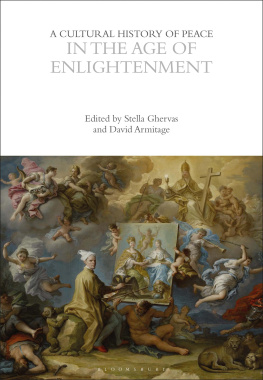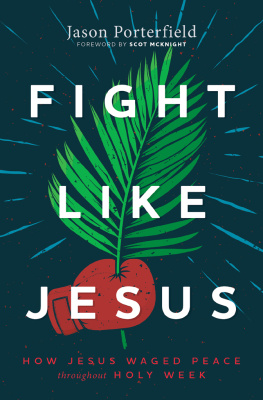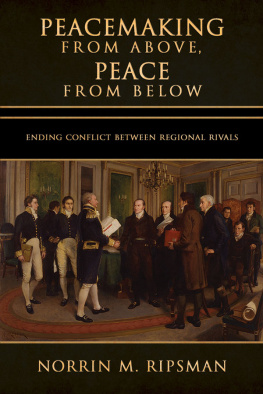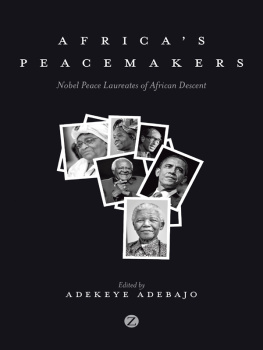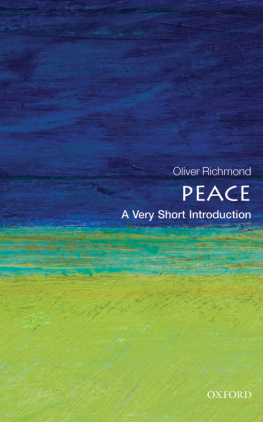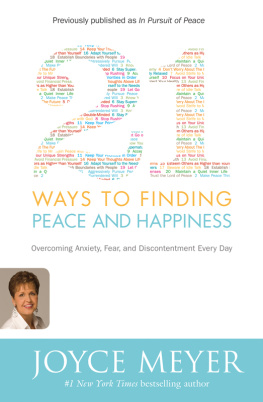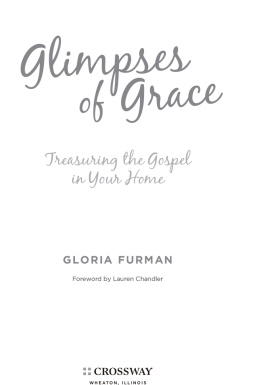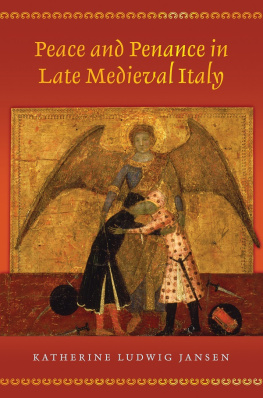PEACE
PEACE
A World History
Antony Adolf
polity
Copyright Antony Adolf 2009
The right of Antony Adolf to be identied as Author of this Work has been asserted in accordance with the UK Copyright, Designs and Patents Act 1988.
First published in 2009 by Polity Press
Polity Press
65 Bridge Street
Cambridge CB2 1UR, UK.
Polity Press
350 Main Street
Malden, MA 02148, USA
All rights reserved. Except for the quotation of short passages for the purpose of criticism and review, no part of this publication may be reproduced, stored in a retrieval system, or transmitted, in any form or by any means, electronic, mechanical, photocopying, recording or otherwise, without the prior permission of the publisher.
ISBN-13: 978-0-7456-5459-1
A catalogue record for this book is available from the British Library.
Typeset in 10 on 12 pt Sabon
by Servis Filmsetting Ltd, Stockport, Cheshire
Printed and bound in Great Britain by MPG Books Ltd, Bodmin, Cornwall
The publisher has used its best endeavours to ensure that the URLs for external websites referred to in this book are correct and active at the time of going to press. However, the publisher has no responsibility for the websites and can make no guarantee that a site will remain live or that the content is or will remain appropriate.
Every effort has been made to trace all copyright holders, but if any have been inadvertently overlooked the publishers will be pleased to include any necessary credits in any subsequent reprint or edition.
For further information on Polity, visit our website: www.polity.co.uk
For Ioana, our families and friends,
To whom I owe my life and peace of mind;
For peace workers past, present and future,
To whom we owe the world and this book is a tribute;
For teachers, mentors and colleagues,
To whom more is owed than can be recognized;
Thank you.
Contents

Acknowledgments

This book would not have been possible without the outstanding work of researchers, writers and publishers it would take volumes just to name, before whom I remain in awe and gratitude. The editorial and production teams at Polity have not only been a pleasure to work with, but are also to be merited with a professionalism and expertise for which credit here does slight justice; my appreciation to Andrea Drugan, Jonathan Skerret, Neil de Cort and Susan Beer. The anonymous reviewers of the books early drafts provided insights for which I am thankful, as I am for those who commented on them at other stages. I value the enthusiastic support of George, Catherine and Christine Adolf, Matt Norman, Cheryl Zaleski, Rachel Hurst, Nick Smaglio and Stephanie Studzinski, among many others. All acknowledgments share the inherent deficiency of leaving out more than they can possibly include, and this one is no exception. But a constituency no acknowledgment should overlook is the most obvious: readers, thank you.
Introduction
How Does Peace Have a World History?

An analysis of the history of mankind shows that from the year 1496 BC to the year 1861 of our era, that is, in a cycle of 3357 years, there were but 227 years of peace and 3130 years of war: in other words, thirteen years of war for every year of peace. Considered thus, the history of the lives of peoples presents a picture of uninterrupted struggle. War, it would appear, is a normal attribute of human life.
Ivan Bloch
As the industrialist, internationalist peace activist Bloch goes on to contend, we no longer have the luxury of seeing the actualization of peace as a noble if naive vision of how things could have been or can be. His argument in The Future of War is that the historically unimaginable destructive capacity of modern weapons, coupled with the inclinations of those who use them, have made risking war morally impermissible as well as rationally unthinkable. He put forth his unheeded advice at the turn of last century, in the midst of the technological, socio-economic and political upheavals leading up to the First World War. But the promises of and perils to peace today make his point as valid and vital at the turn of our own.
The problem with Blochs shorthand world history of peace is his narrow denition of it exclusively as the absence of war, also a dominant one contemporarily. Convenient for quick quantitative analyses, this connement makes qualitative approaches based on the many other meanings of peace proposed and practiced throughout world history practically impossible. Two millennia ago, as the Roman Republic became an Empire and the Pax Romana dawned, the historian Livy asserted that war has its laws as peace has.does not is that just as some ways of waging and winning wars are constant and others change over time, depending on what wars mean for participants and the means at their disposal (to name just two factors), so it is with ways of making and maintaining peace. Peace and peacemaking are not a line of pharmaceutical products the only functions of which are to treat symptoms and diseases of war, nor are they merely preventative vaccines. What are they?
Three basic heuristic categories of peace and peacemaking can serve as aids in capturing a panoramic view of their history across cultures and centuries, while also permitting us to zoom in on issues of permanent or periodic importance, subjectively and objectively:
1. Individual Peace: How individuals become and stay at peace with themselves;
2. Social Peace: How groups become and stay at peace within themselves; and
3. Collective Peace: How groups become and stay at peace between each other.
The purpose of this book is to show how peace and peacemaking along these and other lines have evolved in and transformed their/our historical contexts. My hope is that this pedagogical exercise in the recent, distant and primordial past can improve their prospects in the present and future by emphasizing that taking cultural contingencies and diversities into consideration is a necessary choice for peace and peacemaking to be actualized based on a set of imperatives.
The purpose of this introduction is to explore how radically different forms of peace and peacemaking throughout world history coupled with our (mis)understandings of them were both causes and consequences of cultural change, and why this makes putting forth a static denition of either at the outset counterproductive. Individual, social and collective peace as described above are not intended as denitions in this sense, but as dynamic paradigms in which culturally specic meanings of peace have historically been proposed and practiced. The value of these meanings-in-action within and across cultures, as focal points of this book, lies in the ways in which they have inuenced those of today and can better those of tomorrow.
Peaces of World History
Three years into the US Civil War (18615), in a private letter, President Abraham Lincoln as cleverly and concisely as ever conded:
Peace does not appear so distant as it did. I hope it will come soon, and come to stay; and so come as to be worth the keeping in all future time. It will then have been proved that, among free men, there can be no successful appeal from the ballot to the bullet; and that they who take such appeal are sure to lose their case, and pay the cost.
Here, he does not use the word victory to describe the aim of the Northern Unionist States he was leading against those of the separatist South, and his absolutist rst use of peace as the cessation of the ongoing war is balanced by his conditional aspiration thereafter. Upholding confederative constitutional principles and afrming the abolition of slavery throughout the country were not secondary considerations to Lincoln in this appeal, but part and parcel of the meaning of the
Next page
